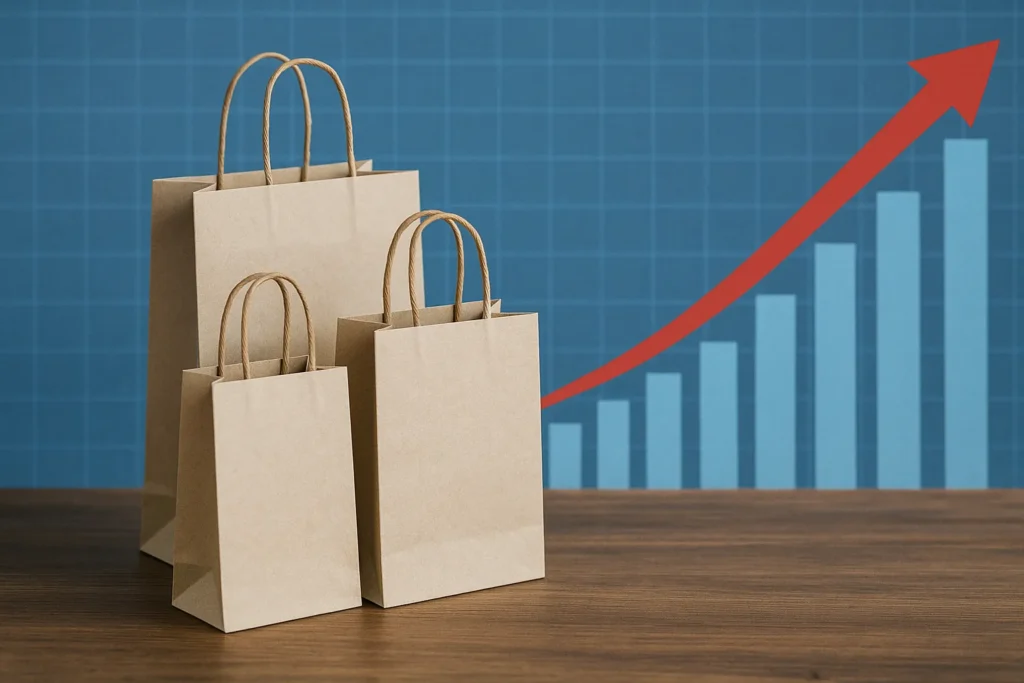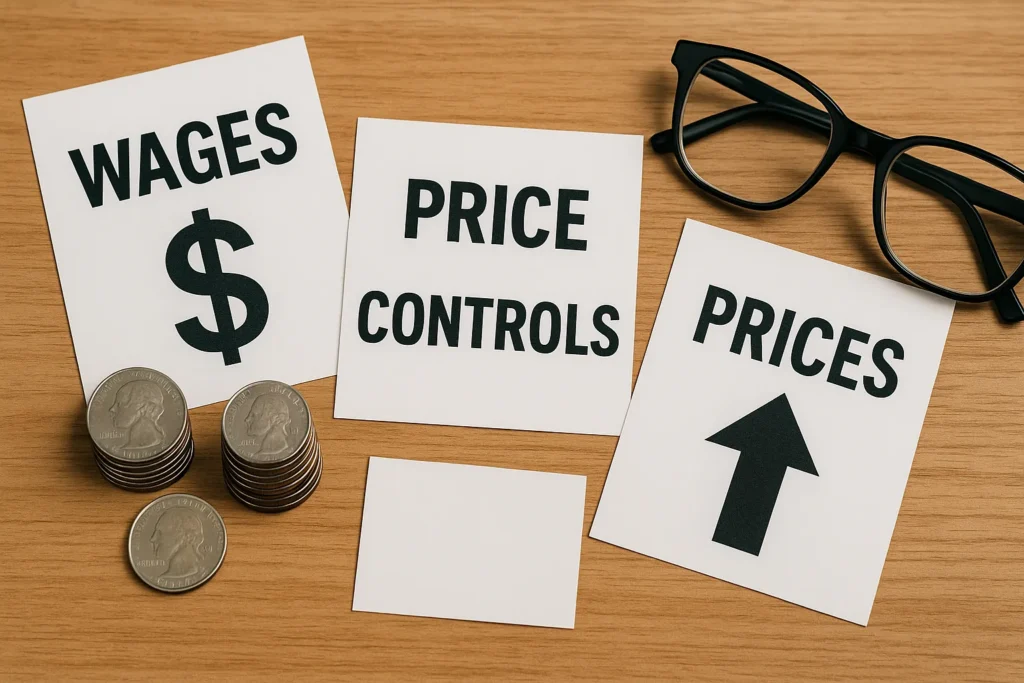Ever wondered why your favorite candy bar seems to shrink while the price stays the same? Or why that dream vacation suddenly seems out of reach? The culprit is often inflation, a sneaky economic force that silently chips away at your purchasing power.
In this article, we’ll break down what is inflation and how does it affect prices, making it easy to understand even if you’re not an economist. Get ready to decode the mystery behind rising costs and learn how it impacts your everyday life!
Understanding the Basics: What is Inflation?
Inflation, at its core, is the rate at which the general level of prices for goods and services is rising, and subsequently, purchasing power is falling. Think of it as the economy’s version of a rising tide, but instead of lifting boats, it’s lifting prices.
This means that one unit of currency (like a dollar, euro, or yen) buys less than it did in prior periods.
The Simple Definition of Inflation
Simply put, inflation means your money doesn’t stretch as far as it used to. That $20 bill you have today won’t buy as many groceries as it did last year.
This decline in purchasing power impacts consumers, businesses, and the overall economy.
How Inflation is Measured
Inflation is typically measured by tracking changes in a price index, with the Consumer Price Index (CPI) being the most widely used. The CPI measures the average change over time in the prices paid by urban consumers for a basket of consumer goods and services.
Another important measure is the Producer Price Index (PPI), which tracks changes in the prices that domestic producers receive for their output.
Different Types of Inflation
Not all inflation is created equal. There are different types, each with its own causes and consequences:
- Demand-Pull Inflation: This occurs when there is too much money chasing too few goods. Increased demand pulls prices upward.
- Cost-Push Inflation: This happens when the costs of production (like wages and raw materials) increase, pushing prices higher.
- Built-In Inflation: This is a self-perpetuating cycle where wages and prices increase in response to each other.
The Ripple Effect How Inflation Affects Prices

Now that we know what inflation is, let’s dive into how it actually affects the prices of the things we buy every day. The impact is far-reaching and touches nearly every aspect of our economy.
Impact on Consumer Goods
One of the most noticeable effects of inflation is the rising prices of everyday consumer goods. From groceries to clothing to gasoline, the cost of these essentials tends to increase during inflationary periods.
This directly impacts household budgets, forcing consumers to make tough choices about what they can afford.
Impact on Services
It’s not just goods that become more expensive during inflation; the cost of services also rises. This includes everything from haircuts and restaurant meals to healthcare and transportation.
As service providers face higher costs for labor and supplies, they often pass those costs on to consumers in the form of higher prices.
Impact on Housing and Real Estate
Inflation can have a complex effect on housing and real estate. On one hand, rising prices can make it more expensive to buy a home, especially for first-time buyers.
On the other hand, homeowners may see the value of their properties increase, leading to a wealth effect. Rising rents are also a common consequence of inflation.
Impact on Investments
Inflation can also affect investments. While some assets, like stocks and real estate, may provide a hedge against inflation, others, like fixed-income securities, may lose value.
Investors often adjust their portfolios to try to protect their wealth during inflationary periods.
Impact on Wages and Salaries
Ideally, wages and salaries should keep pace with inflation so that workers can maintain their standard of living. However, this isn’t always the case.
If wages don’t rise as quickly as prices, workers may experience a decline in real income, meaning they can afford less even though their nominal income has increased.
The Causes of Inflation: What Sparks the Fire?
Understanding the causes of inflation is crucial for predicting and managing it. Several factors can contribute to rising prices.
Increased Demand

As mentioned earlier, demand-pull inflation occurs when there is a surge in demand for goods and services that outpaces the available supply. This can happen for various reasons, such as increased consumer spending, government stimulus programs, or rising export demand.
When demand exceeds supply, businesses can raise prices because consumers are willing to pay more.
Rising Production Costs
Cost-push inflation happens when the costs of producing goods and services increase. This can be due to rising wages, higher raw material prices, increased energy costs, or supply chain disruptions.
Businesses often pass these higher costs on to consumers in the form of higher prices.
Monetary Policy
Monetary policy, controlled by central banks like the Federal Reserve in the United States, can also influence inflation. If the central bank increases the money supply too rapidly, it can lead to inflation.
This is because more money chasing the same amount of goods and services can drive up prices.
Fiscal Policy
Government spending and taxation policies, known as fiscal policy, can also affect inflation. Increased government spending, especially if it’s not matched by increased tax revenues, can lead to higher demand and potentially higher prices.
Tax policies can also impact production costs and consumer spending.
Exchange Rates
Changes in exchange rates can also contribute to inflation. If a country’s currency depreciates, it becomes more expensive to import goods and services, leading to higher prices for consumers.
Conversely, a stronger currency can make imports cheaper, potentially helping to dampen inflation.
The Effects of Inflation: Who Wins and Who Loses?
Inflation doesn’t affect everyone equally. Some individuals and groups may benefit from rising prices, while others may suffer.
Winners
- Borrowers: Borrowers with fixed-rate loans may benefit from inflation because the real value of their debt decreases over time.
- Asset Holders: People who own assets like real estate, stocks, or commodities may see their wealth increase during inflationary periods.
- Businesses with Pricing Power: Companies that have the ability to raise prices without losing customers can maintain their profit margins during inflation.
Losers
- Lenders: Lenders who issue fixed-rate loans may lose out during inflation because the real value of the repayments they receive decreases over time.
- Savers: People who hold cash or fixed-income investments may see their purchasing power erode during inflation.
- Those on Fixed Incomes: Retirees and others on fixed incomes may struggle to keep up with rising prices.
The Overall Impact on the Economy
High inflation can have several negative consequences for the overall economy. It can erode consumer confidence, discourage investment, and lead to economic instability.
Central banks often try to keep inflation at a low and stable level to promote sustainable economic growth.
Strategies to Combat Inflation: What Can Be Done?
Combating inflation is a key priority for governments and central banks. Several strategies can be used to try to keep rising prices in check.
Monetary Policy Tools
Central banks have several tools at their disposal to manage inflation. One of the most common is raising interest rates. Higher interest rates can reduce borrowing and spending, which can help to cool down demand and bring prices under control.
Another tool is adjusting the money supply. By reducing the amount of money in circulation, the central bank can reduce inflationary pressures.
Fiscal Policy Measures
Governments can also use fiscal policy to combat inflation. This can involve reducing government spending or increasing taxes.
These measures can help to reduce demand and bring prices under control.
Supply-Side Policies
Supply-side policies aim to increase the supply of goods and services in the economy. This can involve measures such as reducing regulations, investing in infrastructure, or promoting technological innovation.
By increasing supply, these policies can help to alleviate inflationary pressures.
Wage and Price Controls

In some cases, governments may resort to wage and price controls to try to curb inflation. However, these measures are often controversial and can have unintended consequences.
They can distort markets and lead to shortages and inefficiencies.
Inflation in the Real World: Examples and Case Studies
To better understand how inflation works, let’s look at some real-world examples and case studies.
The Hyperinflation in Zimbabwe
One of the most extreme examples of inflation in recent history is the hyperinflation that occurred in Zimbabwe in the late 2000s. At its peak, inflation reached an estimated 79.6 billion percent per month.
Prices were doubling every day, and the country’s currency became virtually worthless.
The German Hyperinflation of the 1920s
Another famous example of hyperinflation is the German hyperinflation of the 1920s. After World War I, Germany struggled to pay its war debts, and the government began printing money to cover its expenses.
This led to a rapid increase in the money supply and a corresponding surge in prices.
The Oil Shocks of the 1970s
The oil shocks of the 1970s provide an example of cost-push inflation. When oil prices soared due to geopolitical events, it led to higher costs for businesses and consumers.
This, in turn, contributed to rising prices across the economy.
Recent Inflationary Trends
In recent years, many countries have experienced rising inflation due to factors such as supply chain disruptions, increased demand, and expansionary monetary and fiscal policies.
Central banks around the world are now grappling with how to bring inflation under control without triggering a recession.
Protecting Yourself from Inflation: Practical Tips
While you can’t control inflation, you can take steps to protect yourself from its effects.
Invest in Assets that May Outpace Inflation
Consider investing in assets that have the potential to outpace inflation, such as stocks, real estate, or commodities.
These assets may provide a hedge against rising prices.
Negotiate a Higher Salary
If possible, try to negotiate a higher salary to keep pace with inflation.
This can help you maintain your standard of living.
Cut Discretionary Spending
Review your budget and look for areas where you can cut discretionary spending.
This can help you free up cash to cover essential expenses.
Shop Around for the Best Deals
Take the time to shop around for the best deals on goods and services.
This can help you save money and stretch your budget further.
Consider Inflation-Indexed Securities
Consider investing in inflation-indexed securities, such as Treasury Inflation-Protected Securities (TIPS).
These securities are designed to protect investors from inflation.
Conclusion
So, what is inflation and how does it affect prices? We’ve journeyed through the core concepts, impacts, causes, and potential solutions related to inflation. From understanding its measurement to exploring real-world examples, it’s clear that inflation is a complex and multifaceted phenomenon that touches every aspect of our economic lives.
Whether you’re a seasoned investor or simply trying to make ends meet, understanding inflation is essential for making informed financial decisions. What strategies have you found helpful in navigating inflationary periods? Share your experiences and insights in the comments below!